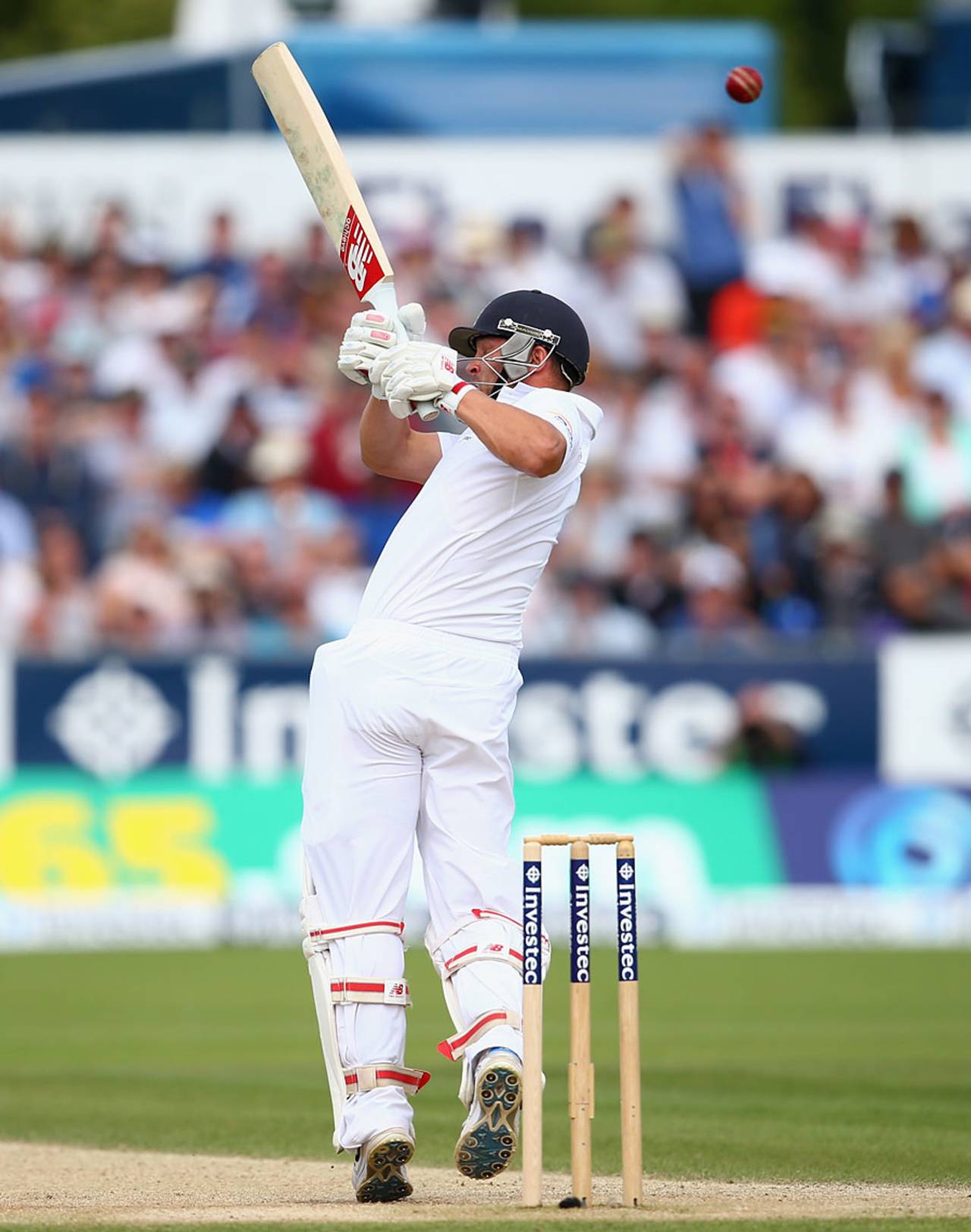The Trott problem
He has fallen off his early peak, perhaps inevitably, but it might have to do with having to play in a manner that does not come naturally to him
Hassan Cheema
28-Aug-2013

Does Trott's decline in Test cricket have to do with his role in the shorter formats? • Getty Images
The recently concluded Ashes series brought forth a confusing version of Jonathan Trott. The England No. 3 has historically been portrayed as the embodiment of the soul-sapping grind-till-they-quit style of Andy Flower's England team. Yet apart from the first innings of the fifth Test Trott played precisely the sort of stuff that Flower would not approve of - flighty forties and fifties before inexplicably getting out.
This inability to convert is not new. Trott has had a decline even as the popular perception of him hasn't altered. Over the first 18 months of his career, leading up to and including the Ashes in 2010-11, he averaged over 61 in Test cricket; but, like Mike Hussey a few years before him, the gods of cricket averages caught up to him and dragged him back towards more mortal numbers. In fact, since that series Trott has averaged a mere 40 in the longest format.
How much is a man averaging 40 worth to a team gunning to be the best in the world? A sample size of 30 Tests (over 27-odd months) is not small enough to be considered an aberration. Do you prefer someone who averages 40 but has the capability to bat for nearly seven hours in the final four sessions in India, against Indian spinners (as Trott did in Nagpur) to win you a historic series? Or do you prefer someone who averages 45 over a long period but on the basis of scores against weak bowling attacks on easy pitches, or as the supporting act in an innings (pointing fingers at no one in particular - especially after the Ashes just finished). How do you statistically measure someone's ability to win or draw you a game singlehandedly?
Secondly, we take it for granted that the cricketers we see, praise and castigate should be able to adjust their games as per our demands. Much of Trott's "decline", I believe, has to do with the role he has been given in the shorter formats. Over the first 18 months, when he batted in the manner of the second coming of Sunil Gavaskar, he wasn't England's first choice in the 50-over game - he only played 11 of 32 ODIs from his debut till the Ashes series Down Under. Since then he has played 54 of 61 games that England have played, and through the maelstrom of harsh criticism has adjusted his game - this year he averages over 70 and has a strike rate of 87.4 in ODIs.
But it has had an effect on his game in Test matches. The reasons for his failings, particularly in the current Ashes series, seem to be down to him playing more shots and being more "proactive" than he has previously been. The 49 off 60 balls in the fourth Test was perhaps the best example of this. Of Trott's 27 scores of 50-plus, only once have his first 50 runs been scored in under 75 balls (16 of those 27 times he has taken 100-plus balls).
One of the major reasons for the drop in his stats has to do with his conversion rate. His ratio of innings to 50-plus scores is pretty similar before and after the fifth Test of the 2010-11 Ashes (about one in three), but his conversion has dropped significantly. Five of his first ten scores of 50-plus were converted into centuries; since then he has scored four hundreds and 13 fifties.
In ODIs, Trott has four hundreds, 22 fifties overall, but while a 70 or 80-odd in an ODI can be a match-winning innings, it is often a job half-done in Tests. So the question to be asked is whether England want Trott to be their second-best ODI batsman and fourth-best Test batsman, or if they want him to return to being a great Test player while not playing many ODIs. In an ideal world, Andy Flower would have Trott averaging 60 in Tests and 50-plus in ODIs, with a strike rate above 80, but that ideal world seems to contain contradictions.
And finally, there is the matter of being proactive. We are told that being proactive is the best thing to do, that there is a "right way" to play cricket. This is a debate not restricted to cricket alone. The Tiki Taka Taliban - as Barney Ronay famously called them - have a similar viewpoint in football. What this ignores is that, unlike in ice-skating, you get no points for intent and style.
England already have Pietersen, Bell and the lower order to do the forcing, if need be. Do they really want to turn Cook and Trott into more "expressive" players? Their rise under Flower came by reactive, not proactive, cricket - build at the top and then capitalise. Five of their current top six have career strike rates under 50 (as did Andrew Strauss and Paul Collingwood). Asking of them to do what is unnatural could turn them into less productive players.
England are fond of being meticulous, so I wonder if they have done a cost-benefit analysis of Trott 2.0 compared to the original version. Perhaps allowing him to return to doing what he did best is the solution.
Or it could just be that he's out of form.
Hassan Cheema is a sports journalist, writer and commentator, and co-hosts the online cricket show Pace is Pace Yaar. He tweets here